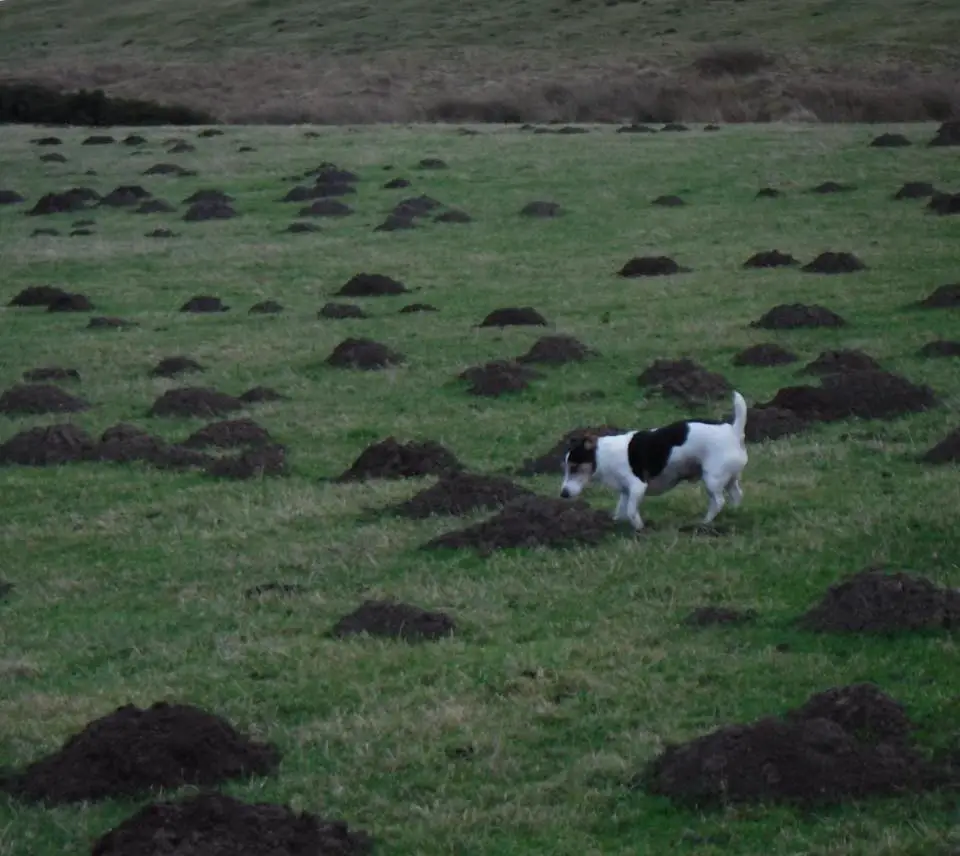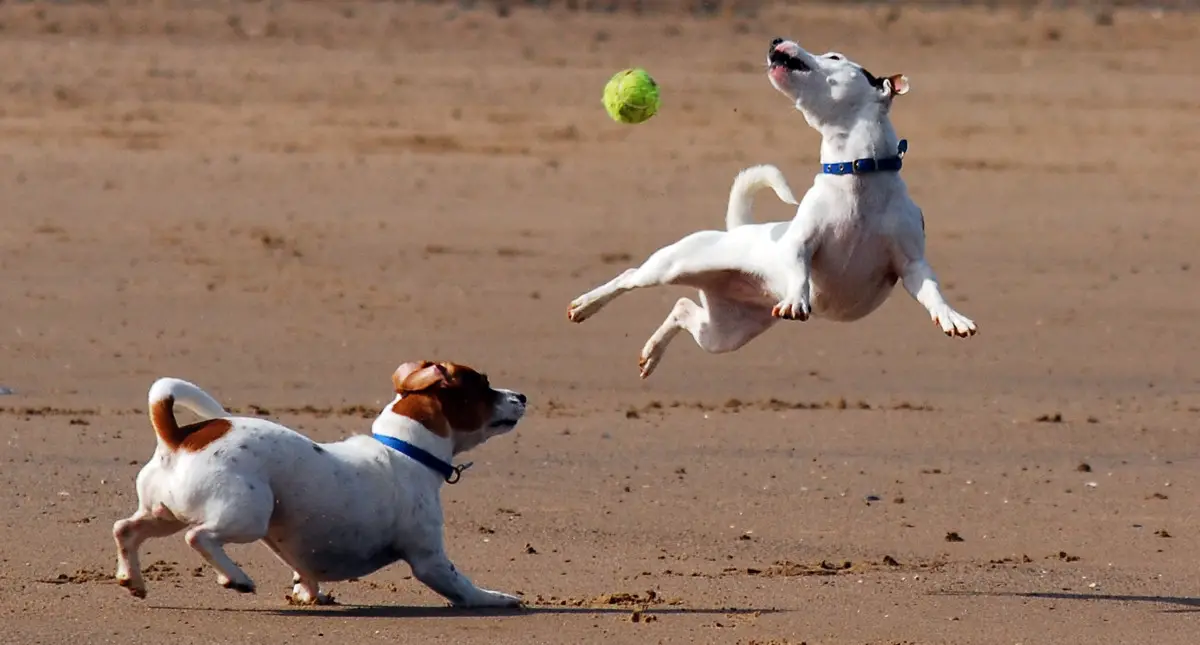Table of Contents
*This post may contain affiliate links. As an Amazon Associate we earn from qualifying purchases.
One of the main reasons Jack Russell Terriers end up in shelters and rescues is that well-meaning owners don’t know what they’re getting into.
They may see a cute Jack Russell puppy — let’s face it, JRT pups are freakin’ adorable — and think that nothing so tiny and sweet could ever cause any sort of problem. And then, as one rescue puts it, they realize they have the dog from heck.

It’s rarely the dog’s fault, however. More often than not, the human fails to take into account the unique characteristics of a terrier — characteristics that humans have bred into them for centuries.
In short, they did not bring their JRT into a terrier-friendly home.
So, how can you make sure that your home is terrier-friendly?
About the Terrier Breeds
The American Kennel Club describes terriers in these terms:
- Feisty
- High energy
- “Eager for a spirited argument”
- Inquisitive
- Stubborn
Though many are small and cute, terriers have been bred as watchdogs, vermin-killers, and hunting dogs.

In short, as Shakespeare might say, “though they be but small, they be fierce.” And if you’re thinking a Jack Russell will make a quiet, docile lap dog, you may be in for a surprise.
What Does This Mean?
First, it’s important to remember that these characteristics have been deliberately chosen by breeders over centuries, brought to the forefront, and concentrated. A Jack that chases your cat or barks every time someone walks past the front door isn’t misbehaving. It’s doing the job it was bred for. A terrier that needs a lot of exercise — and many of them do — isn’t a bad dog. It’s just being a terrier.
Although a terrier’s natural feistiness means that you have to establish your authority firmly — and basic obedience training is a must — it’s not a fault. It’s important to establish boundaries and be consistent. But you can’t punish a terrier for being a terrier. If you decide this breed is for you, then you need to work with its native characteristics to bring out the best in your dog.
So How Do You Make A Terrier Home Sweet Home?
Because of who they are, you might encounter some of the following behaviors from your JRT. Here’s how to handle them.
Give them a place to dig

Terriers, and in particular the diminutive JRT, were bred to chase prey animals to ground. This often means digging in behind them. So if your JRT turns out to be a digger, blame it on genetics. But that doesn’t mean you have to say goodbye to your lawn.
There are a number of ways to address digging. First, of course, is to give your pup plenty of exercise and mental stimulation. A JRT needs plenty of both, and digging can stem from boredom.
Dog Obedience Training Review also suggests burying chicken wire in places your dog likes to dig. They won’t like how it feels on their paws, and it may cause them to stop digging altogether.
If you’re installing a fence, also make sure to sink it a good distance below ground, so your pup can’t dig its way out.
One dog-friendly way to handle digging is to provide your dog with their own designated digging area. You can make it an extra-special fun place for your dog by burying treats and toys in this space. If you do this, why would they want to dig anywhere else?
Make sure your fence is high enough
A Jack Russell Terrier can leap up to five times its own height! This means that a 12-inch Jack can leap five feet into the air. So if you’re planning to let them out into the back garden unsupervised, make sure your fence is high enough to prevent an escape.
Accommodate the prey drive

This is a difficult one. Some recommend against keeping a Jack Russell Terrier and a cat (or other small, furry animal) together in the same house. Jacks were bred to hunt small, furry animals, and if this instinct kicks in, it will not end well.
It is possible, however, to raise a Jack with a cat — provided you either bring a puppy into the house with an established adult cat, or raise a puppy and kitten together. Bringing a cat into a house with an established terrier is probably not the best idea.
It’s important to always supervise interactions between your JRT and your cat. Obedience training can help you to establish and enforce house rules, including respecting feline family members. Also, provide your cat with high places to escape to, and use baby gates to separate the dog and cat when you can’t be home to watch them.
But even if you don’t have smaller animals, your dog will be much happier if it has an outlet for its prey drive. This means throw the ball. Throw the stick. Play chase. Don’t punish natural terrier behavior — give it something to do.
Bark training
The Jack Russell Terrier is a natural watchdog. And a watchdog’s job is to sound the alarm in case of an intruder. Unfortunately, a dog’s idea of an intruder may be different from that of its owner.
Also unfortunately, plenty of normal events can reinforce unwanted barking. For example, the mail carrier comes to the door and sticks a letter through the slot. Your dog barks. The mail carrier goes away. Job done! Good dog!

Or a stranger knocks on the door when you’re not home. Your dog barks. The stranger leaves. Yes! Result!
You can’t control these events. But there are a few things you can try to help cut down the noise.
Animal Wellness Magazine recommends the following:
- Don’t shout. Your dog may interpret this as panic and bark even more in response.
- Choose a command, and say it firmly, but not loudly, to show you’re in charge of the situation, and your dog needs to stand down. “No bark,” is a good one. Or even “Good dog,” in a firm, authoritative voice.
- Reward your dog for de-escalating. Keep a high-value treat by the door. Allow your dog one bark, then use your stand-down command. When they do, give them the treat.
- Practice, and praise good behavior.
Make opportunities for exercise

The Jack Russell Terrier has huge amounts of both mental and physical energy. This means that they need plenty of exercise — as do we all — and loads of mental stimulation. And, as a JRT owner, this is on you.
If your dog is destructive or anxious, these are good signs that they’re not getting enough of one or the other kinds of exercise.
So head off problems before they begin. A walk a day may not be enough. Be prepared to throw the ball, play tug o’war, toss the stick, and so on. Even better, check out dog sports and agility classes in your area. And if you have to leave your JRT alone for long periods of time, make sure he or she has something to do, or consider crate training.
Owner Education is the Key
A Jack Russell Terrier can be a wonderful companion. But it’s important to understand not just common terrier behaviors but also where these behaviors come from. And it’s vital to work with your dog’s nature rather than against it, to bring out the best in your relationship.
Did your Jack surprise you when you first brought them home? We’d love to hear about it!
Featured Image CC SA 3.0 by Steve 65, via Wikimedia Commons

